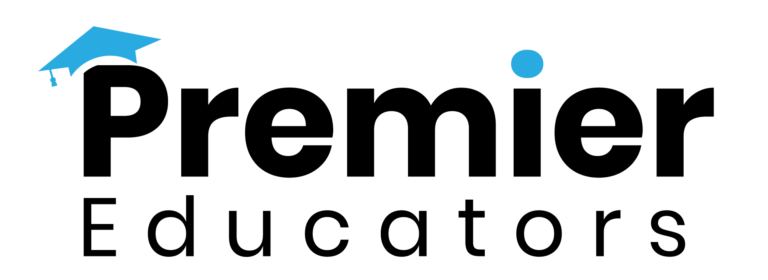
Developing a Growth Mindset in Young Learners
In early childhood education, fostering a growth mindset can be transformative for young learners. A growth mindset—the belief that abilities and intelligence can be developed through dedication, effort, and learning—is a powerful approach that can shape how children view challenges and failures. When children adopt this mindset, they are more likely to tackle tasks with confidence, resilience, and an enthusiasm for learning. Here’s how you can nurture a growth mindset in your classroom and help children build the skills they need to thrive.
1. Praise Effort, Not Just Outcomes
One of the most effective ways to promote a growth mindset is to focus on effort rather than results. When children understand that hard work and perseverance are valued, they begin to see the learning process as meaningful and rewarding in its own right. This emphasis on effort encourages children to approach new tasks with determination and an understanding that success is within their reach if they try their best.
Tip: Shift the Language of Praise
Instead of simply telling a child, “You’re so smart,” try saying something like, “I’m proud of how hard you worked on that!” or “Look at how much progress you’ve made with all your effort!” This subtle shift in language helps children recognize that their growth is due to their dedication, rather than an inherent, unchangeable trait. By praising their efforts, we empower them to keep going even when they face difficulties.
Additional Activities to Encourage Effort:
- Effort Journals: Encourage children to keep a simple effort journal where they can draw or write about something they tried hard at each day. This can help them see their own growth over time and connect their efforts with achievements.
- “Yet” Wall: Create a wall in the classroom where children can write or draw things they haven’t mastered “yet.” This reinforces the idea that they’re on a learning journey, with each effort bringing them closer to their goal.
2. Emphasize That Mistakes Are Part of Learning
Mistakes are invaluable learning experiences, especially for young children. When we encourage children to view mistakes as a natural and essential part of the learning process, we help them develop resilience and perseverance. In a growth mindset classroom, mistakes are celebrated as opportunities to understand what went wrong and find new ways to succeed.
Tip: Normalize Mistakes and Share Stories
Use stories from your own life, or examples of famous figures who have learned from their mistakes, to demonstrate that everyone makes errors. For instance, you could share how Thomas Edison had hundreds of unsuccessful attempts before inventing the light bulb, teaching children that persistence pays off. Let children know it’s okay to try again and that each attempt brings them closer to their goal.
Additional Activities to Embrace Mistakes:
- Mistake of the Day: Each day, you or the children can share a mistake they made and what they learned from it. This builds a safe environment where making mistakes is seen as part of the learning adventure.
- Problem-Solving Partner Pairs: Pair children up to tackle tasks together. When one child makes a mistake, they can work with their partner to problem-solve and find a solution, reinforcing collaboration and resilience.
3. Use Language That Supports Growth
The words we use can profoundly influence how children perceive their abilities. Growth-oriented language encourages children to view challenges as learning opportunities rather than obstacles. Phrases like “You haven’t learned it yet” or “Let’s try a different way” promote the idea that growth is possible and that improvement happens over time with continued effort.
Tip: Integrate Positive, Growth-Focused Language
Reinforce the idea that learning is a journey with phrases such as, “I see you’re trying a new strategy” or “Look how far you’ve come!” This helps children understand that learning is not about immediate success but about steady progress. Encouraging patience and a willingness to keep trying is key.
Additional Language Tips:
- Avoid “Fixed” Labels: Instead of saying, “You’re a math whiz,” try “You worked hard to figure out that math problem.” This shows that their progress is a result of effort, not fixed traits.
- Encourage Reflective Questions: Ask children questions like, “What was challenging about that task?” or “What would you try differently next time?” This promotes self-reflection and encourages them to think about their own learning process.
4. Encourage Curiosity and Problem-Solving
Curiosity-driven learning is a natural way to foster a love of discovery and build intrinsic motivation. By encouraging children to ask questions, explore solutions, and think independently, we help them develop critical thinking skills and a resilient attitude toward learning. When children are given the freedom to explore, they learn that challenges can be fun and that there is joy in the process of problem-solving.
Tip: Set Up Exploration Stations
Create designated areas in the classroom where children can explore freely with various materials. For example, you might have a science station with simple experiments, a building station with blocks, or a sensory table with various textures and materials. Encourage open-ended exploration by giving them prompts such as, “What happens if you try this?” or “How many ways can you build a bridge with these materials?”
Additional Ideas to Foster Curiosity:
- “I Wonder” Board: Dedicate a wall where children can post questions they have about the world. Each week, explore one of the questions together as a class to satisfy their curiosity and model how to seek answers.
- Challenge of the Week: Present a new challenge each week, like building a tower with specific materials or figuring out how to make a marble roll down a ramp in a certain way. Let children work together to find creative solutions, and celebrate their ideas and attempts, even if they don’t “succeed” on the first try.
5. Model a Growth Mindset as an Educator
Children learn from the adults around them, and modeling a growth mindset yourself is one of the best ways to reinforce these concepts. When you openly demonstrate resilience, curiosity, and a willingness to learn, children are more likely to mirror these attitudes. Whether it’s trying a new teaching strategy, acknowledging your own mistakes, or showing excitement about learning something new, your behavior can profoundly impact their approach to challenges.
Tip: Share Your Own Learning Experiences
Tell stories about things you’re working on improving, such as learning a new hobby or skill. For instance, you might say, “I’m trying to get better at painting, and sometimes I mess up, but I keep practicing because it’s fun to see myself improve.” This makes the growth mindset feel real and relatable to children.
Additional Ways to Model a Growth Mindset:
- Reflect on Classroom Challenges Together: If a lesson doesn’t go as planned, involve the children in problem-solving. Ask, “What could we do differently next time?” This teaches children that setbacks are normal and manageable.
- Celebrate Effort and Progress: Highlight times when you see children putting in extra effort or showing persistence. Make an “Effort Wall” where you can add notes recognizing specific instances of hard work and perseverance.
Final Thoughts: Building a Growth Mindset for Life
Nurturing a growth mindset in young learners is one of the most valuable gifts you can give them. By encouraging effort, embracing mistakes, using growth-focused language, fostering curiosity, and modeling resilience, you’re equipping them with tools to face challenges with confidence and enthusiasm. This mindset will serve them well, not only in the classroom but throughout their lives. When children understand that they have the power to learn, grow, and improve through effort and determination, they are more likely to approach the world with optimism and a lifelong love of learning.
Embrace the journey alongside them, and celebrate every step of their growth.

